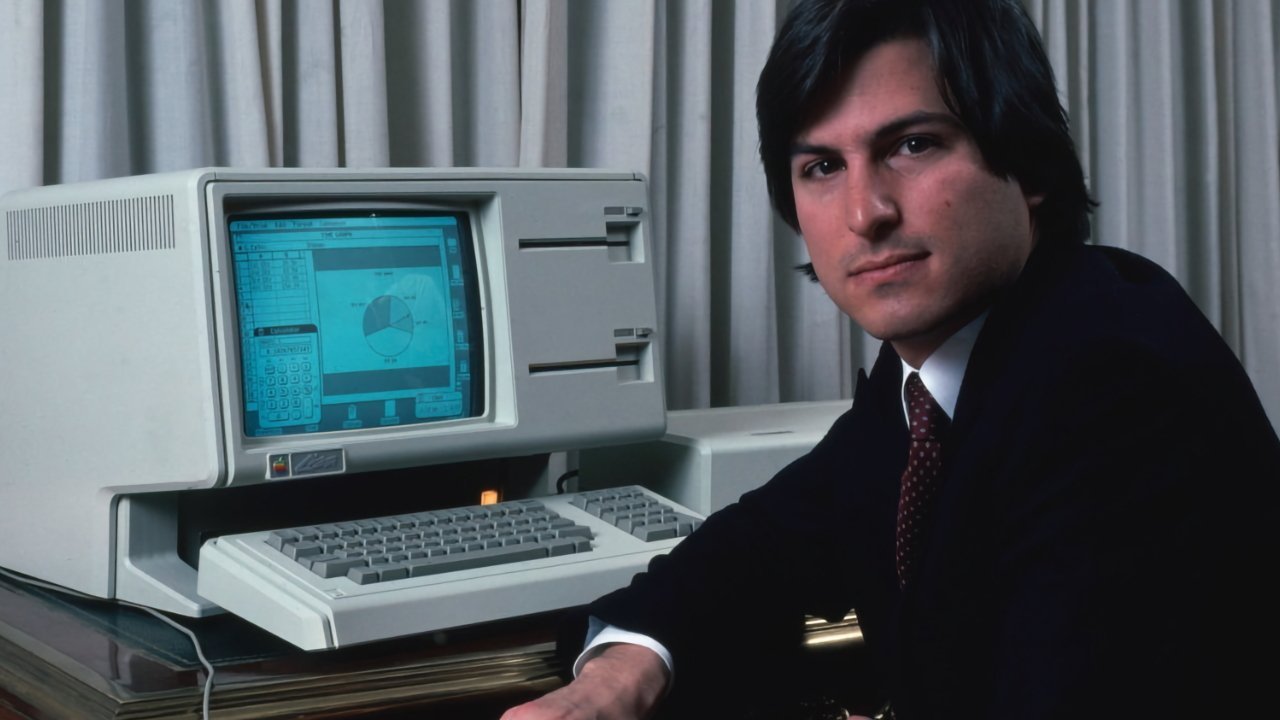Apple's Lisa entombment was just the beginning, shows new documentary
Digging up the story about thousands of buried, unsold Lisa computers led to an interesting story about sabotage, Steve Jobs, and more.

Steve Jobs with an Apple Lisa
Not all icons shine for the right reasons. Apple's Lisa computer, for example, is the company's most iconic failure, a product left behind by the Mac.
Based on a news article published in 1989 detailing the mass burial of thousands of Lisa computers, The Verge has put together a pretty quick documentary about the demise of the Lisa, and how 2,700 unsold computers ended up in a landfill in Logan, Utah.
The Lisa was weighed down by hardware issues and a price tag set at $10,000. The computer itself was a sign of things to come, though, the first of its kind to be "user-friendly" right out of the box.
The Lisa featured windows, a mouse, icons, and more, a full year before the launch of the original Mac. As quoted by veteran technology journalist Steven Levy, "The Lisa was the first computer out there that you didn't have to struggle with a big computer manual or even hire a consultant to use."
Finding the Lisas wasn't possible, according to workers at the landfill, as too much time has passed since they were deposited at the site. Interestingly, as the story goes, the computers were allegedly run over by bulldozers even before they were buried, making things even more difficult.

The documentary interviews various people tied to the burial of the computers, including the reporter and photo editor who cataloged the story back in 1989. Another piece of the puzzle is a man named Bob Cook, who worked for Sun Remarketing and became an Apple reseller.
Cook saw an opportunity in the mid-80s to sell old computers, even working with Apple to take old inventory by consignment, including about 7,000 Lisas.
Cook didn't stop at just selling them, though. He actually tried to improve them, saying he spent north of $200,000 in research and development to try and make the computers better.
He upgraded hardware, trying to make the Lisa shell a more formidable computer versus other contemporaneous releases. Software got a boost with the MacWorks package, allowing the Lisa to run more modern Mac software.
While there's nothing revelatory about it, especially for folks embedded in the Apple ecosystem for decades, the documentary is still worth a watch. It compellingly tells the story of a 40-year-old computer that changed the world, even if no one noticed at the time.
Read on AppleInsider

Steve Jobs with an Apple Lisa
Not all icons shine for the right reasons. Apple's Lisa computer, for example, is the company's most iconic failure, a product left behind by the Mac.
Based on a news article published in 1989 detailing the mass burial of thousands of Lisa computers, The Verge has put together a pretty quick documentary about the demise of the Lisa, and how 2,700 unsold computers ended up in a landfill in Logan, Utah.
The Lisa was weighed down by hardware issues and a price tag set at $10,000. The computer itself was a sign of things to come, though, the first of its kind to be "user-friendly" right out of the box.
The Lisa featured windows, a mouse, icons, and more, a full year before the launch of the original Mac. As quoted by veteran technology journalist Steven Levy, "The Lisa was the first computer out there that you didn't have to struggle with a big computer manual or even hire a consultant to use."
Finding the Lisas wasn't possible, according to workers at the landfill, as too much time has passed since they were deposited at the site. Interestingly, as the story goes, the computers were allegedly run over by bulldozers even before they were buried, making things even more difficult.

The documentary interviews various people tied to the burial of the computers, including the reporter and photo editor who cataloged the story back in 1989. Another piece of the puzzle is a man named Bob Cook, who worked for Sun Remarketing and became an Apple reseller.
Cook saw an opportunity in the mid-80s to sell old computers, even working with Apple to take old inventory by consignment, including about 7,000 Lisas.
Cook didn't stop at just selling them, though. He actually tried to improve them, saying he spent north of $200,000 in research and development to try and make the computers better.
He upgraded hardware, trying to make the Lisa shell a more formidable computer versus other contemporaneous releases. Software got a boost with the MacWorks package, allowing the Lisa to run more modern Mac software.
While there's nothing revelatory about it, especially for folks embedded in the Apple ecosystem for decades, the documentary is still worth a watch. It compellingly tells the story of a 40-year-old computer that changed the world, even if no one noticed at the time.
Read on AppleInsider

Comments
Especially if you have a first-generation model with the "Twiggy" 5.25" floppy drives. Most of those were upgraded to 3.5" drives, making unmodified units particularly rare.